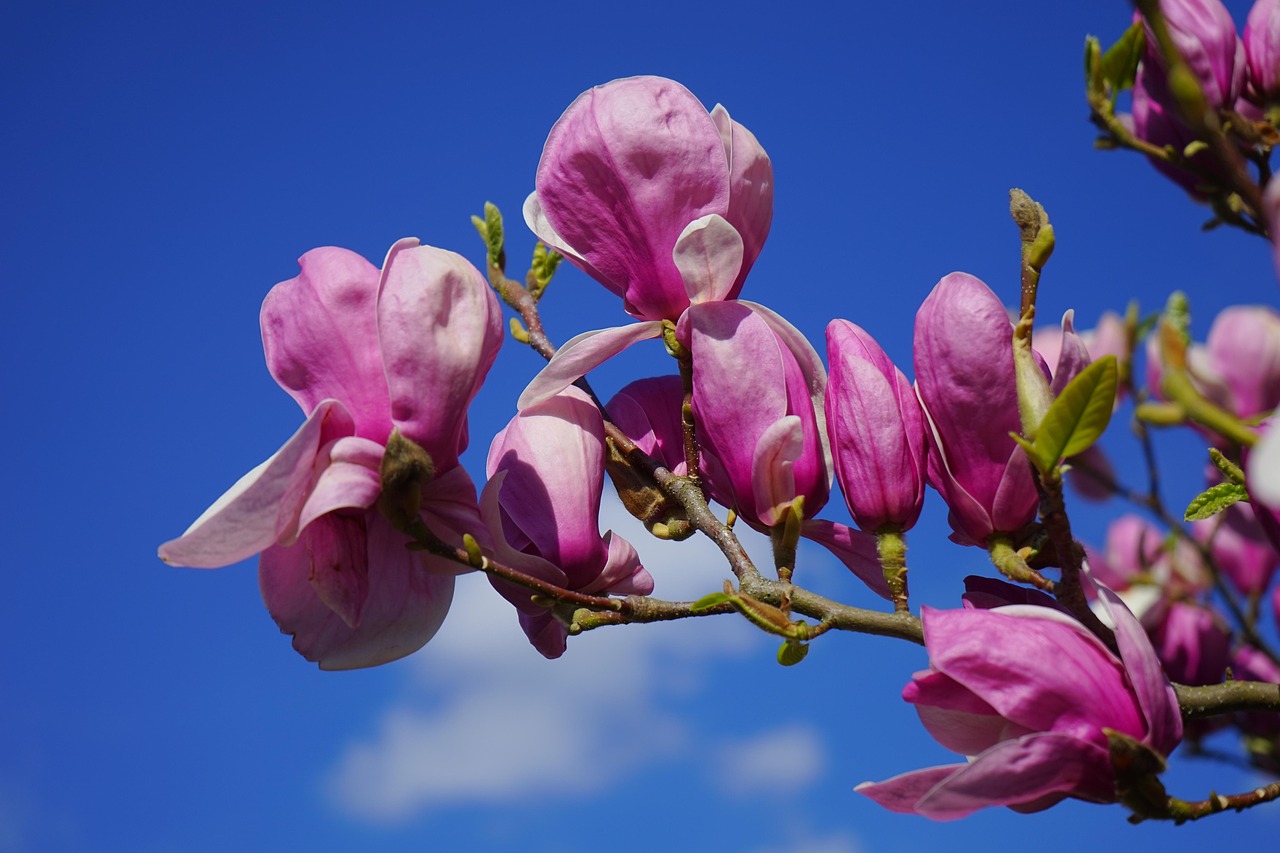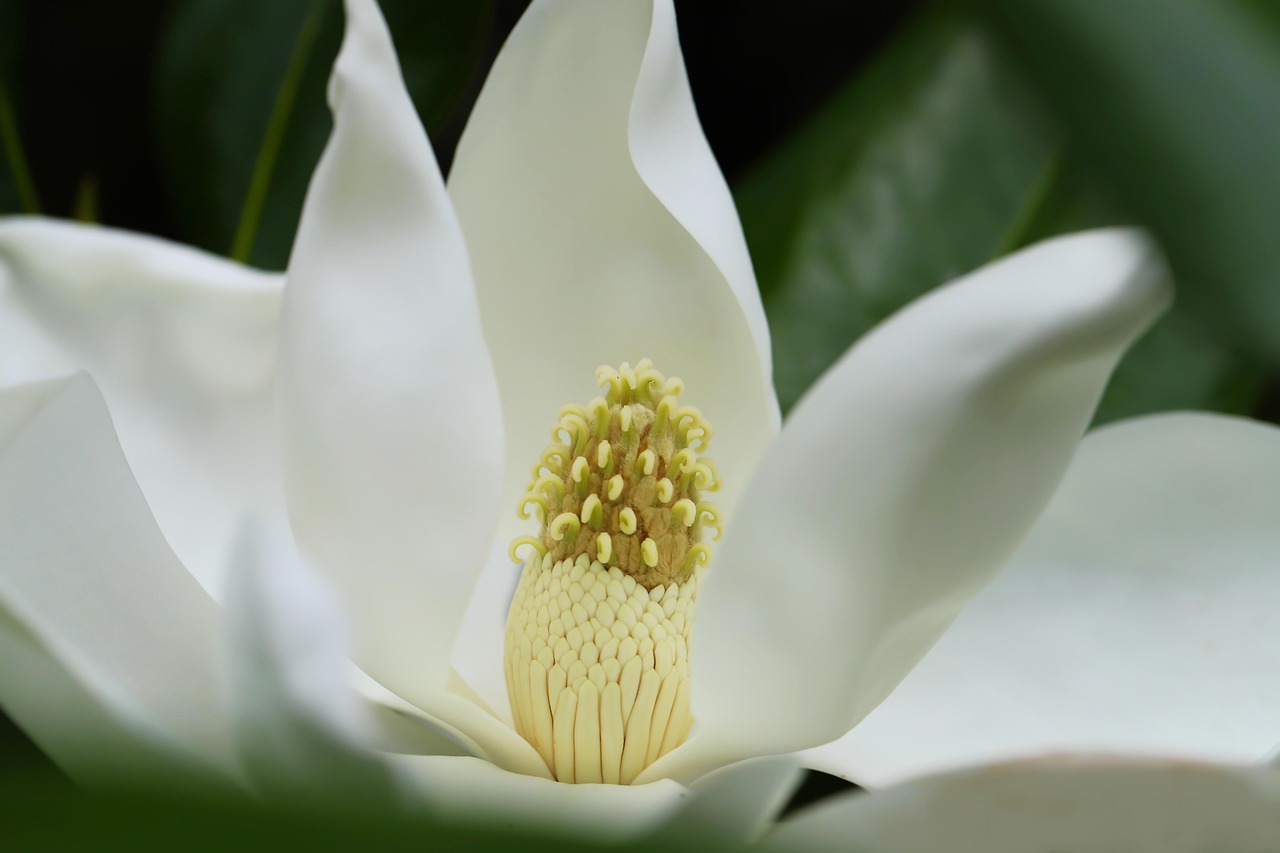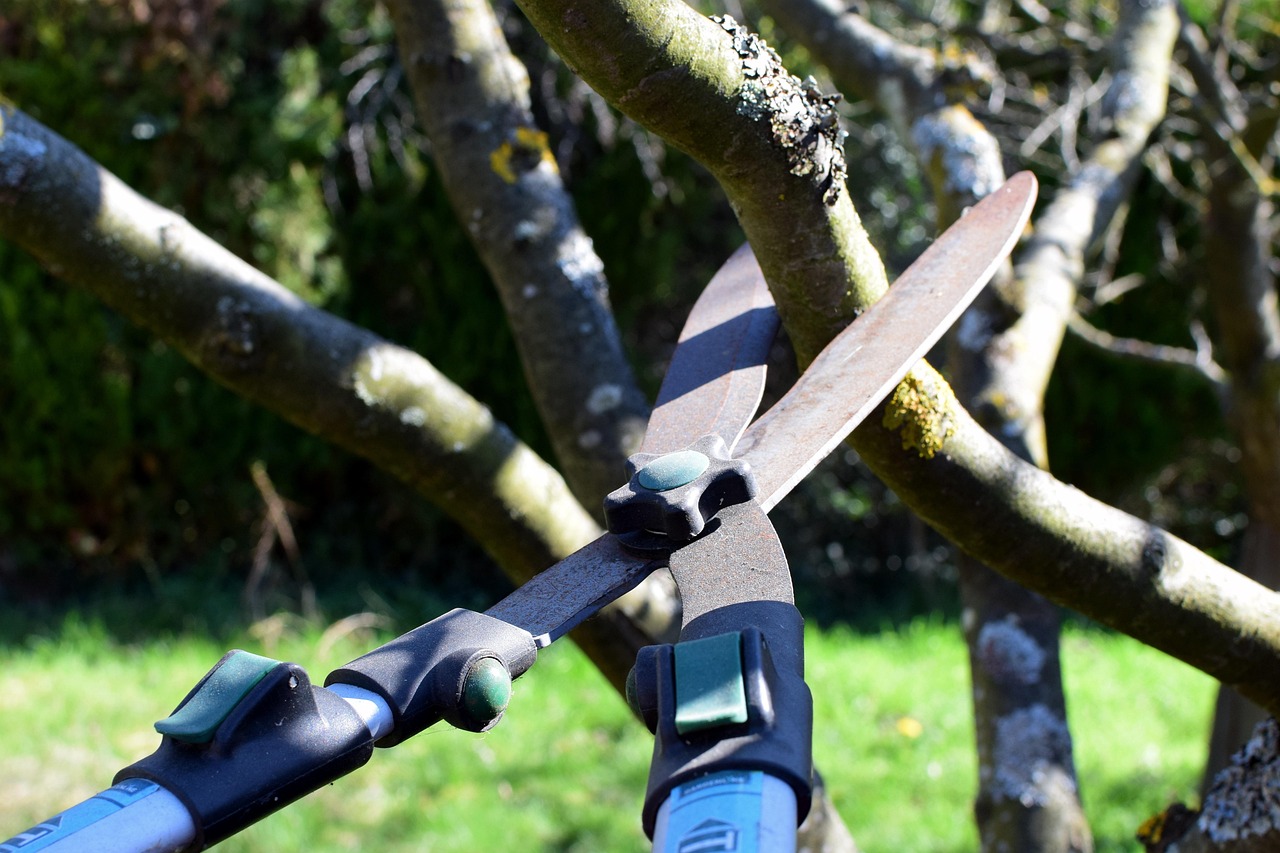Pruning magnolia trees is essential for achieving garden symmetry. This process promotes healthy growth, enhances the tree’s shape, and encourages blooming. Proper timing and technique are crucial to maintain the tree’s natural beauty while ensuring it fits harmoniously into your garden design.
Magnolia trees are celebrated for their stunning flowers and lush foliage. They can add elegance and charm to any landscape. However, without proper maintenance, these trees can become unkempt and lose their visual appeal. Pruning is a key practice for anyone looking to maintain the symmetry and health of their magnolia trees.

The timing of pruning is important. It generally takes place in late winter or early spring before new growth begins. This timing allows gardeners to see the tree’s structure clearly, making it easier to decide which branches to cut. Additionally, pruning at this time minimizes stress on the tree and encourages abundant blooms in the spring.
Understanding Magnolia Trees
Magnolia trees belong to the family Magnoliaceae, which includes both deciduous and evergreen species. They are known for their large, fragrant flowers that often appear before the leaves in spring. Understanding the specific type of magnolia tree you have is essential for effective pruning.
The most common types of magnolia trees include:

- Southern Magnolia (Magnolia grandiflora)
- Star Magnolia (Magnolia stellata)
- Saucer Magnolia (Magnolia x soulangeana)
- Cucumber Tree (Magnolia acuminata)
Each species has distinct characteristics that influence how and when to prune. For example, the Southern Magnolia is an evergreen, maintaining its leaves year-round, while the Star Magnolia is a deciduous tree that sheds its leaves in autumn.
Benefits of Pruning Magnolia Trees
Pruning magnolia trees offers several benefits that contribute to garden symmetry and overall tree health:
- Encourages Healthy Growth: Removing dead or diseased branches allows the tree to focus its energy on healthy growth.
- Improves Air Circulation: Thinning out crowded branches enhances air circulation, reducing the risk of fungal diseases.
- Enhances Aesthetic Appeal: Pruning helps shape the tree, making it more visually appealing and balanced in your garden.
- Increases Flower Production: Regular pruning stimulates new growth, leading to more blooms each season.
When to Prune Magnolia Trees
The best time to prune magnolia trees varies based on the species. Generally, late winter or early spring is ideal. However, some considerations should be kept in mind:

| Species | Best Time to Prune | Notes |
|---|---|---|
| Southern Magnolia | Late Winter | Avoid heavy pruning; focus on shaping. |
| Star Magnolia | Early Spring | Prune after flowering for best results. |
| Saucer Magnolia | Late Winter | Can tolerate more aggressive pruning. |
| Cucumber Tree | Late Winter | Minimal pruning recommended; focus on dead branches. |
It’s important to assess your magnolia tree’s health before pruning. Check for any signs of disease or damage. If you notice any issues, address them first to ensure the tree’s overall health. Pruning should not be done if the tree is stressed due to drought or other environmental factors.
Tools Needed for Pruning
Using the right tools is essential for effective pruning. The following tools are commonly needed:
- Hand Pruners: Ideal for small branches up to ¾ inch thick.
- Loppers: Useful for thicker branches, providing greater leverage.
- Saws: Necessary for larger limbs that require more cutting power.
- Gloves: Protect your hands from thorns and sharp edges.
- Loppers: Useful for thicker branches, providing greater leverage.
Make sure all tools are sharp and clean before use. This prevents damage to the tree and reduces the risk of disease transmission. Always disinfect tools between cuts if you are working with multiple trees.

The next step after gathering tools is to create a plan for your pruning session. Identify which branches need to be removed or shaped based on the desired symmetry and health of the tree. Developing a clear strategy will make the pruning process much smoother.
Pruning Techniques for Magnolia Trees
Once you have your tools ready and a plan in place, it’s time to focus on the actual pruning techniques. Different methods can be applied depending on the desired outcome, whether you want to maintain a specific shape, promote growth, or encourage blooming. Understanding these techniques will ensure that your magnolia tree remains healthy and visually appealing.
1. Thinning
Thinning is a technique that involves selectively removing branches to improve air circulation and light penetration within the tree. This method is particularly effective for dense magnolia trees, which can harbor disease if airflow is restricted.
- Choose the Right Branches: Focus on removing inward-growing branches and those that cross over each other.
- Cut at the Base: Make cuts as close to the base of the branch as possible without damaging the surrounding bark.
- Aim for Balance: Ensure that you maintain a balanced structure by evenly distributing cuts throughout the tree.
Thinning not only enhances the tree’s health but also allows for more sunlight to reach the inner foliage, promoting lush growth.
2. Heading Cuts
Heading cuts involve cutting back a branch to a smaller lateral branch or bud. This technique encourages bushier growth and can help control the size of the tree.
- Identify Lateral Buds: Look for healthy buds or branches where you want new growth to emerge.
- Make Clean Cuts: Use sharp pruners to make clean cuts at a 45-degree angle above the bud.
- Limit the Amount: Avoid cutting more than one-third of a branch at any one time to prevent shock.
Heading cuts are particularly useful for younger magnolia trees that need shaping as they grow.
3. Cleaning Cuts
Cleaning cuts involve removing dead, damaged, or diseased branches from the tree. This practice is crucial for maintaining overall health and preventing pests and diseases from spreading.
- Inspect the Tree: Conduct a thorough inspection to identify any unhealthy branches.
- Cut Back to Healthy Tissue: When removing diseased branches, cut back to healthy tissue to ensure proper healing.
- Dispose of Debris: Always dispose of removed branches properly to prevent disease spread.
Common Mistakes to Avoid
Pruning can be a delicate process, and several common mistakes can hinder your efforts. Being aware of these pitfalls can help ensure that your magnolia tree thrives.
- Pruning at the Wrong Time: Avoid pruning during late summer or fall, as this can expose the tree to harsh winter conditions and stress.
- Over-Pruning: Removing too many branches can lead to shock and poor growth. Focus on targeted cuts instead.
- Poor Cuts: Making jagged cuts can damage the bark and hinder healing. Always use clean, sharp tools.
- Ignoring Tree Structure: Failing to consider the natural shape of the tree can result in an unnatural appearance. Prune with the tree’s natural growth in mind.
Caring for Your Magnolia Post-Pruning
After pruning, proper care is essential for your magnolia tree’s recovery and continued growth. Here are some important steps to follow:
- Watering: Ensure your magnolia receives adequate water after pruning, especially if you prune during a dry period. Water deeply but infrequently to encourage strong root growth.
- Mulching: Apply a layer of mulch around the base of the tree. This helps retain moisture, suppress weeds, and regulate soil temperature.
- Monitoring Growth: Keep an eye on new growth in the weeks following pruning to ensure that the tree is recovering properly.
If you notice any signs of distress, such as wilting leaves or discoloration, consult with a local arborist or gardening expert for advice on how to address potential issues. Regular monitoring will help sustain the health and beauty of your magnolia tree.
The Role of Fertilization
Fertilizing your magnolia tree can support its recovery after pruning and enhance its overall vitality. Here are some considerations regarding fertilization:
- Selecting Fertilizer: Choose a slow-release fertilizer formulated for flowering trees. This provides balanced nutrients over time.
- Timing: Apply fertilizer in early spring, just before new growth begins. This timing ensures that nutrients are available when the tree needs them most.
- Follow Instructions: Adhere to the manufacturer’s instructions regarding application rates to avoid over-fertilization, which can harm the tree.
A well-fertilized magnolia tree will not only recover faster from pruning but also produce more vibrant flowers and healthier foliage in the seasons to come.
Pest and Disease Management for Magnolia Trees
Maintaining the health of your magnolia tree extends beyond pruning and fertilization. Pests and diseases can threaten its vitality and beauty. Being proactive in managing these issues is crucial for sustaining a healthy garden environment.
Common Pests Affecting Magnolia Trees
Several pests can affect magnolia trees, causing damage to leaves, branches, and overall health. Here are some common pests to watch for:
- Scale Insects: These small, immobile pests attach themselves to branches and leaves, sucking sap and weakening the tree.
- Aphids: Known for their rapid reproduction, aphids can cause leaf curling and stunted growth by feeding on tree sap.
- Spider Mites: These tiny arachnids create fine webs on the leaves and can lead to yellowing or browning foliage.
- Magnolia Borer: This larva bores into the trunk or branches, potentially causing severe damage if not addressed promptly.
Identifying Pest Damage
Recognizing the signs of pest infestation early can help mitigate damage. Some common indicators include:
- Yellowing leaves or leaf drop
- Visible insects on leaves or branches
- Sticky residue (honeydew) on leaves or surrounding surfaces
- Webbing on foliage
- Holes or sawdust around the trunk
Management Strategies for Pests
To manage pests effectively, consider the following strategies:
- Regular Inspection: Check your magnolia tree frequently for signs of pests. Early detection is key to effective management.
- Encourage Beneficial Insects: Ladybugs and lacewings feed on many harmful pests, providing natural pest control.
- Insecticidal Soap: This is a safe option for controlling soft-bodied insects like aphids and spider mites. Apply according to the manufacturer’s instructions.
- Neem Oil: An organic pesticide that disrupts the life cycle of various pests. It is effective against scale insects and spider mites.
Disease Prevention and Control
Magnolia trees can also be susceptible to various diseases. Understanding these diseases helps in preventing potential outbreaks.
Common Diseases Affecting Magnolia Trees
The following diseases are frequently seen in magnolia trees:
- Crown Gall: This bacterial disease causes galls or growths on roots and stems, leading to stunted growth and decline.
- Anthracnose: A fungal disease that results in dark spots on leaves. Severe infections can lead to leaf drop.
- Powdery Mildew: This fungal infection appears as a white powdery substance on leaves, often occurring in humid conditions.
- Botryosphaeria Cankers: These cankers affect branches, causing dieback and eventually killing the limb if not managed.
Preventing Diseases
Implementing preventive measures is essential for keeping your magnolia tree healthy. Consider these strategies:
- Avoid Overcrowding: Ensure adequate spacing between trees to improve air circulation and reduce humidity levels around the leaves.
- Proper Watering: Water at the base of the tree rather than overhead to minimize wet foliage, which encourages fungal growth.
- Prune Regularly: Regular pruning removes dead or damaged wood, reducing the chance of disease establishment.
- Use Disease-Resistant Varieties: If planting new magnolias, consider selecting disease-resistant cultivars when available.
Tips for Seasonal Care
Your magnolia tree will benefit from seasonal care throughout the year. Here are some tips to ensure it remains healthy across different seasons:
Spring Care
- Monitor Growth: As new growth begins, keep an eye out for pests and diseases.
- Apply Fertilizer: Use a slow-release fertilizer formulated for flowering trees to support new growth.
- Prune as Needed: Complete any necessary pruning before new growth becomes too dense.
Summer Care
- Irrigation: Ensure consistent watering during dry spells to keep the tree hydrated.
- Pest Control: Continue monitoring for pests; apply treatments as needed.
Fall Care
- Leaf Cleanup: Rake up fallen leaves to prevent potential fungal diseases from taking hold.
- Avoid Late Pruning: Refrain from pruning in late fall to prevent winter injury.
winter Care
- Inspect for Damage: Check for any winter damage or signs of stress on the tree.
- Cabling or Bracing: If your tree has large limbs that may be at risk of breaking under snow or ice, consider cabling or bracing them for support.
Caring for your magnolia tree throughout the year will contribute significantly to its long-term health and beauty, ensuring that it remains a stunning focal point in your garden. Regular attention will help you identify potential issues before they escalate, allowing you to enjoy your magnolia tree’s elegance across all seasons.
In addition to the seasonal care outlined previously, it is essential to consider the location and environmental factors that can significantly impact your magnolia tree’s health. Factors such as soil quality, sunlight exposure, and surrounding vegetation play a vital role in the overall growth and development of your tree.
Soil Quality and Amendments
Magnolia trees thrive in well-drained, nutrient-rich soil. Evaluating your soil quality is crucial for ensuring your magnolia receives the nutrients it needs to flourish.
- Soil Testing: Conduct a soil test to determine pH levels and nutrient content. Magnolia trees prefer slightly acidic to neutral soil (pH 5.5 to 7.0).
- Amendments: Based on soil test results, consider adding organic matter such as compost or well-rotted manure to improve texture and nutrient levels.
- Drainage: If your soil retains too much moisture, consider creating raised beds or improving drainage to prevent root rot.
Sunlight Requirements
Magnolia trees typically prefer full sun to partial shade. Ensuring they receive adequate sunlight will promote healthy growth and abundant flowering.
- Optimal Placement: Plant magnolias in a location that receives at least 6 hours of direct sunlight each day.
- Avoid Shady Areas: Shady locations can hinder flowering and lead to leggy growth as the tree stretches for sunlight.
- Monitor Surrounding Vegetation: Nearby trees or shrubs may compete for light and nutrients, so ensure that magnolias are not overshadowed.
Environmental Considerations
The environment surrounding your magnolia tree can also influence its health. Factors such as water availability, temperature fluctuations, and wind exposure should be evaluated regularly.
- Watering Practices: Be mindful of the tree’s water needs, especially during hot or dry spells. Ensure deep watering rather than frequent shallow watering to encourage deep root growth.
- Temperature Extremes: Protect young magnolia trees from harsh winter conditions by providing mulch around the base for insulation.
- Wind Protection: If your area experiences strong winds, consider planting windbreaks to shield your magnolia from potential damage.
Pest and Disease Management Revisited
As previously mentioned, keeping an eye on pests and diseases is vital. Regular inspections and immediate action can prevent small issues from escalating into significant problems. Additionally, maintaining a healthy environment contributes significantly to your tree’s resilience against pests and diseases.
Engaging with local gardening communities or extension services can provide valuable insights into common regional pests and diseases affecting magnolia trees. This local knowledge can enhance your management strategies effectively.
Final Thoughts
Pruning magnolia trees for garden symmetry is a rewarding task that enhances both the beauty of the tree and the overall aesthetics of your landscape. By understanding the specific needs of your magnolia tree, including proper pruning techniques, seasonal care, pest management, and environmental considerations, you can ensure its health and vitality for many years.
The journey of caring for a magnolia tree involves more than just pruning; it encompasses a holistic approach that includes nutrition, water management, and vigilant monitoring. With dedication and proper care, your magnolia will not only thrive but also become a cherished centerpiece in your garden, admired for its stunning blooms and majestic form.
Remember that every tree is unique, and patience is key in observing how your magnolia responds to your care efforts. Embrace the learning process and enjoy the beauty that these magnificent trees bring to your outdoor space.
